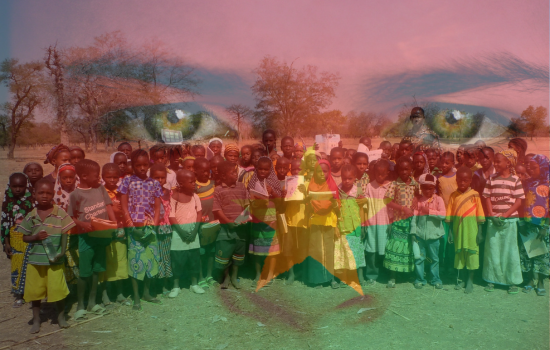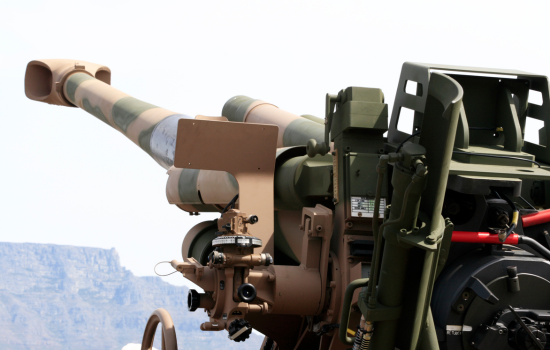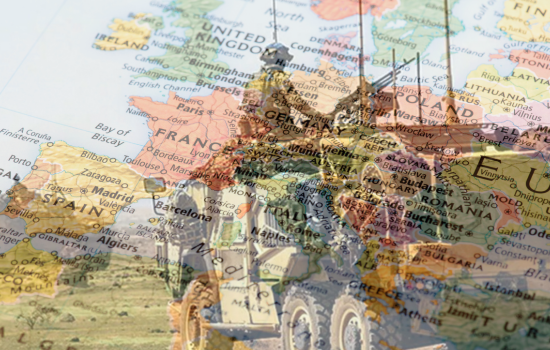The Terror Attacks in Mumbai: Background, Operational Uniqueness and Implications
The attacks began at roughly 9:20 PM Indian Standard Time on November 26th, when shooting was reported at Chhatrapati Shivaji Terminus rail station, one of the world’s busiest train depots. One bystander reported, “There were street vendors in the train station who were sprayed with bullets. The dead run the whole gamut of society. No one was spared.”[i] Separate attacks soon began simultaneously around the entire city at different locations, including the famous Taj Mahal Palace Hotel and the Oberei-Trident Hotel, favorite dining and lodging locations for foreigners, as well as wealthy Indians. Shooting was also reported near the offices of the Times of India newspaper and the Bombay Municipal Corporation. Gunmen threw grenades and shot into crowds at the Cama and GT hospitals in the city’s downtown. Around midnight, a lone gunman also opened fire on the Vidhan Sabha, or legislative assembly, the lower house of state legislature in India.[ii] According to a suspect captured during the attacks, their full assault group numbered sixty to seventy at the beginning of the operation, though only ten gunmen carried out the actual attacks. [iii]
Over the next several days Indian security forces combated terrorists all over the city. A relatively unknown terrorist organization, calling itself the Deccan Mujahideen, claimed responsibility for the ongoing operations.
Deccan Mujahideen: a new organization or a cover name?
The name Deccan Mujahideen in itself could be significant, as either a statement regarding the origins of the group responsible for the Mumbai attacks or an attempt at disinformation. The name “Deccan”, refers to the Deccan Valley, a plateau in central India just to the east of Mumbai, hinting that that the group may be indigenous, or homegrown. Greg Barton, an Australian-based professor and expert on counter-terrorism, noted that, “India has a lot of experience in dealing with attacks by separatist groups, Maoists, Marxist groups, Hindu fundamentalists and Islamist extremist groups, but it hasn’t acknowledged dealing with a Jihadi homegrown network and that appears to be happening now. If that’s confirmed, this is a whole new level of challenge.”[iv] For a country that has in the past declared Islamic terrorist activity to be attributed to foreign actors, proof that the Deccan Mujahideen is a homegrown Jihadi militia may announce the a new era of internal strife.
Initial reports from Indian security forces have revealed that the group claiming responsibility for the Mumbai attacks may indeed be a front for Lashkar a-Tayeb (or the “army of believers”), which was established in 1989 by Pakistani intelligence forces. This information became available after the arrest of a suspect involved in the attacks. “Experts believe the main goal of Lashkar a-Tayeb is to destabilize India by damaging its economy and its fragile ethnic mix while fomenting dissent among India’s large Muslim minority. The organization, which is on the list of outlawed terror organization in many countries, seeks to end India’s occupation of Kashmir. Its ideological platform combines anti-Western ideas (which explains its choice of hotels popular with Westerners in its list of targets) with those of global jihad and of hatred toward India.” The group also has strong links to Al Qaeda and is known to have trained at Al Qaeda camps before the American invasion of Afghanistan.[v]
In the past, the Deccan Mujahideen has claimed responsibility for several attacks against civilians in India. The group claimed credit for the July 25th and 26th bombings in Ahmedabad and Bangalore. The attacks killed 36 Indians wounded more than 120. The group claimed a role in the September 13th attacks in New Delhi that resulted in the deaths of 18 Indians and wounded more than 90. The organization also claimed credit for deadly bombings in Jaipur in May, 2008, which killed 60 and wounded more than 200, and is linked to a bombing in the state of Uttar Pradesh in November, 2007 which killed 14 and wounded 50.[vi]
In many of the attacks previously mentioned, a man identifying himself as “Arbi Hindi” e-mailed the media to announce the organization’s claims. “Arbi Hindi’s real name is Abdul Subhan Qureshi. An Indian national, Qureshi, a computer expert, is believed to have trained hundreds of recruits to conduct terror attacks in India. He is often called India’s Osama bin Laden.”[vii] The group is on nearly every Western terror list, but has never displayed such operational complexity.
Specified Targets: The Taj Hotel, The Oberei-Trident and the Chabad House
Spurning the route of negotiation, Indian security forces, faced with massive hostage situations developing all over the city, opted to take immediate tactical action upon mobilization. Due to the large number of civilian hostages at risk and unknown number of terrorists, India’s National Security Guard (NSG) began room-to-room searches of the Taj and Oberei-Trident hotels. The NSG imposed curfews on the surrounding area.[viii] The hotels appeared to have been targeted because they were frequented by Westerners and the Indian elite. Many witnesses corroborated rumors that the gunmen had asked hostages for identification, looking specifically for American and British nationals.[ix]
By the end of the day on November 28th, Indian security forces claimed to have both hotels under complete control, despite smoldering fires and occasionally audible bursts of gunfire. The death toll continued to rise throughout the conflict, as security forces suffered casualties and hostages were found dead. By the end of the last day of the sieges on November 29th, the death toll had climbed to 195 dead and over 327 wounded.[x] Amongst the dead were foreigners from countries that included the United States, Israel, the United Kingdom, Australia, Japan, Germany and Italy.[xi] Addressing his anxious nation, Prime Minister Singh of India stated that, “The well-planned and well-orchestrated attacks, probably with external linkages, were intended to create a sense of panic, by choosing high profile targets and indiscriminately killing foreigners.”
While clearing the hotels, Indian forces also found explosives that had been planted by the heavily-armed terrorists. Maharashtra state police chief A.N. Roy noted that, “We did find explosive boxes at two locations on either side of the Taj. That was a substantial amount of explosives to cause major damage.” The discovery apparently, “included some RDX plastic explosives, used in the military and for demolition work. Tests were to be carried out to determine the exact types of explosives found.”[xii]
However, even as the hotel sieges seemed to be coming to a bloody but definitive conclusion, the standoff at the Jewish Chabad House was still in the midst of being resolved. In the simultaneous operations to seize other civilian targets, the Islamic terrorists made a high priority of seizing one the few Jewish sites in the city, where they took several hostages including the center’s Rabbi and his wife. The center’s cook managed to escape the building carrying Rabbi Holzberg’s two year-old son.
On the afternoon of November 28th, Indian commandos began an operation to clear the Chabad House and neutralize the terrorists inside. As the operation continued, it became evident that the terrorists were incredibly determined and well-armed. NSG Director General Jyoti Krishan Dutt commented during the operation that, “We have taken over the second floor of the house where a grenade was launched from above. Three hostages were killed by terrorists before they moved upstairs. NSG commandos moved upstairs to kill two terrorists on the fourth floor. Terrorists killed two hostages in this floor.”[xiii] At the end of the raid, the number of hostages found executed totaled nine people, including the Rabbi and his wife.[xiv]
India and Pakistan: Tensions Rising After Attack
The Mumbai attacks have also heightened tensions between two nuclear powers that already have a very strained relationship and a history of armed confrontation. The Indian government was quick to point the finger at Pakistan. Indian External Affairs Minister Pranab Mukherjee said after the interrogation of suspects in custody revealed that some or all of the terrorists were of Pakistani origin.[xv] The further revelation that the attackers might be part of splinter cells of the Lashkar a-Tayeb terrorist organization further inflamed the situation, due to the group’s purported funding and training by Pakistani intelligence. It was also later revealed that “Intelligence services intercepted the terrorists’ conversations via satellite phone. The men spoke in Punjabi and used Pakistani phrases.”[xvi]
Pakistani Foreign Minister responded directly to Indian accusations, releasing a statement urging Indian restraint until all of the facts had been ascertained. He also called terrorism a dual threat, asking Indian leaders to, “not bring politics into this issue. This is a collective issue. We are facing a common enemy and we should join hands to defeat the enemy.”[xvii] If more concrete links are found between the attackers and the Pakistani government, the protracted standoff in Kashmir between India and Pakistan may once again come to a head and result in armed conflict. The two powers have not engaged in open conventional warfare since the Kargil War of 1999 that resulted in the deaths of up to five thousand soldiers.[xviii]
Uniqueness of the Mumbai Attacks and Implications
The attacks in Mumbai represent a distinct departure from previous terrorist activity in India, and in many ways, around the world. Using several offensive assault teams that were trained in military tactics and urban warfare, the Mumbai terrorists turned the downtown area of one of the largest cities in the world into a war zone. Their activity effectively shut down the metropolis and succeeded in inflicting severe casualties on both civilians and security forces first responders. While many militant groups have infiltrated urban centers and conducted operations in the past, the targets have for the most part been, “in countries such as Iraq, Afghanistan, Chechnya, Somalia, Algeria, and Pakistan. But these are countries that are actively in a state of war or emerging from a recent war, where resources and established fighting units already exist.”[xix]
The attack is also unique due to its drawn-out nature and the ability of the terrorist assault teams to evade Indian security forces. Using gunmen instead of suicide bombers, the organization responsible for the Mumbai attacks was able to paralyze the city and remain the focus of the world media for nearly three days. The number of fatalities is also staggering, with the tactical abilities of the terrorists catching Indian security forces completely off guard and struggling to restore order to Mumbai.
The attack showed advanced planning that involved a clandestine entry into India by sea. This allowed the attackers to bring in the weapons and ammunition they needed to execute their strategy. More details are slowly emerging on how the terrorists gained entry into India. A hijacked fishing vessel discovered adrift off the city’s coast was found to contain a satellite phone and the body of the murdered captain. The terrorists most likely used inflatable boats to come ashore. Some witnesses said that they saw such a boat carrying at least eight men, who are now believed to have been the terrorists.[xx]
Throughout the assaults, images of terrorist were repeatedly released showing the attackers to be dressed in casual civilian wear such as jeans and t-shirts. They carried backpacks laden with ammunition and grenades; some of the terrorists also had experience with explosives and planted bombs in the hotels as they were forced to retreat under heavy fire. According to Indian security services, the assault teams were also very well-trained with AK-47s, causing the most damage possible in a short amount of time.
The attackers also exhibited advanced knowledge of their targets’ layouts, which undoubtedly required advanced reconnaissance in preparation. One Indian commander told the media that the terrorists were, “very familiar with the layout of the [Taj] hotel.” The same commando team also revealed the contents of one of the killed gunman’s backpack that included “dried fruit, 400 rounds of AK-47 ammunition, four grenades, Indian and American money and seven credit cards. The pack also had a national identity card from the island of Mauritius.”[xxi] Indian authorities confirmed at the end of the sieges that they had killed nine gunmen and captured one. There is still much speculation that the number of attackers was in fact much higher but they were able to slip away in civilian clothes.
All in all, the coordinated attacks stunned defense establishments all over the world. A new brand of terrorism has come to India and may open a new chapter in the free world’s War on Terror. The coming days will see heightened tensions between India and Pakistan and ongoing investigations into the origins and motivations of the attackers. Forensics teams from the United States and Israel are already on the ground and in the process of identifying bodies as well as piecing together the time flow of the attacks.
As the world begins to mourn the victims of this horrific attack that indiscriminately took the lives of so many, many questions still need to be answered. Several things remain painfully clear. Firstly, terrorism knows no bounds and vulnerable soft targets around the world will continue to be targeted. Secondly, security forces must remain flexible and adapt to terrorist action as it is perpetrated and planned. Lastly, the deaths of the victims will not be in vain should the terrorist leaders who planned the Mumbai murders be brought to justice.
Notes:
[i] Bowley, Graham, The New York Times, “Mumbai Attacks: End of Day 2,” 27 November, 2008.
[ii] Associated Press, “Timeline for Mumbai terrorist attacks,” 28 November, 2008
[iii] Mellman, Yossi, Haaretz, “ANALYSIS / Is Al-Qaida behind the Mumbai terror attacks?,” 28 November, 2008. This number has now been disputed and some sources place the number of attackers as low as ten (Sengupta, Somini, The New York Times, “Mumbai Siege May Be Finished,” 29 November, 2008). However, this low figure may only represent the number of terrorists who arrived in Mumbai the day of the attack, who may have joined cells already embedded in the city.
[iv] Gazzar, Brenda, Jerusalem Post, “Local Jihadi network marks ‘a whole new challenge’“, 28 November, 2008.
[v] ANALYSIS / Is Al-Qaida behind the Mumbai terror attacks?
[vi] Roggio, Bill, The Long War Journal “Analysis: Mumbai attack differs from past terror strikes,” 28 November, 2008.
[vii] ANALYSIS / Is Al-Qaida behind the Mumbai terror attacks?
[viii] India Times, Taj operations to be wrapped up in hours: Indian Army, 28 November, 2008.
[ix] “Timeline for Mumbai terrorist attacks,” 28 November, 2008.
[x] IBNlive, “Mumbai Attack: Combing operation on in Nariman House,” November 28, 2008.
[xi] Associated Press, “Official: Siege ends at Mumbai’s Taj hotel,” 28 November 2008
[xii] Associated Press, “Explosives found at Mumbai hostage hotel: police,” 28 November 2008
[xiii] IBNlive, “Terrorists kill 5 hostages at Nariman House,” 28 November 2008
[xiv] Haim Hoshen, the Foreign Ministry’s Head of Asia and South Asia Department
[xv] Thaindian News, “Terror denouement begins as Oberoi cleared, Pranab points to Pakistan,” 28 November 2008.
[xvi] “Analysis: Mumbai attack differs from past terror strikes.”
[xvii] Reuters, “Mumbai siege nears end,” 28 November 2008
[xviii] A.K. Chakraborty, Government of India, 26 July 2000.
[xix] “Analysis: Mumbai attack differs from past terror strikes.”
[xx] Times Online UK, “Terrorist Mothership Found Off the Coast of Mumbai,” 29 November, 2008.
[xxi] “Mumbai Siege May Be Finished.”






